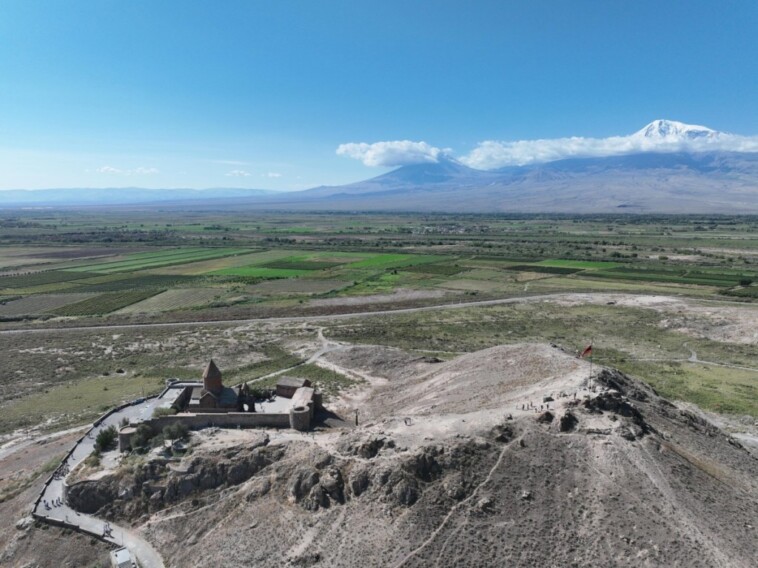Archaeologists recently uncovered what they believe to be one of the oldest Christian churches in the world.
The University of Münster announced the discovery of the fourth-century church in a press release on Oct. 11.
The school, which is located in Germany, teamed up with archaeologists from the National Academy of Sciences of Armenia to find the ancient ruins.
The remains of the ancient Christian building were found at the Artaxata site in the Ararat Plain.
Excavators have been digging there since 2018, but didn’t find the remains until recently.
“The find consists of an octagonal building with cruciform extensions,” the University of Münster explained.
“The team excavated parts of the church and studied it using geophysical methods.”
“Typologically, the find corresponds to early Christian memorial buildings,” the press release continued.
“In the cross-shaped extensions, the researchers discovered the remains of wooden platforms, which were radiocarbon dated to the mid-4th century AD”
The oldest Christian church buildings date back to the third and fourth centuries. The octagonal church at Artaxata had a floor made of mortar and terracotta tiles, and measured around 100 feet in diameter.
There were also some fragments of marble imported from the Mediterranean, which indicate the church was “lavishly decorated,” experts say.
“The 4th century building is the oldest archaeologically documented church in the country – sensational evidence for early Christianity in Armenia,” University of Münster Professor Achim Lichtenberger said in a statement.
The find is fitting in Armenia, which the University of Münster says was the first Christian state ever established.
“According to legend, Gregory the Illuminator converted the Armenian king Tiridates III to Christianity in Artaxata in 301 AD, making Armenia the first Christian state in the world,” the school explained.
“The medieval monastery of Khor Virap, just a stone’s throw from the now-discovered church, is a reminder of this tradition. Artaxata served as the capital of the Kingdom of Armenia, ruled by the Artaxiad and Arsacid dynasties,” the press release added.
“The city developed into an important metropolis in the Hellenistic period and was the capital of the Kingdom of Armenia for almost six centuries.”






